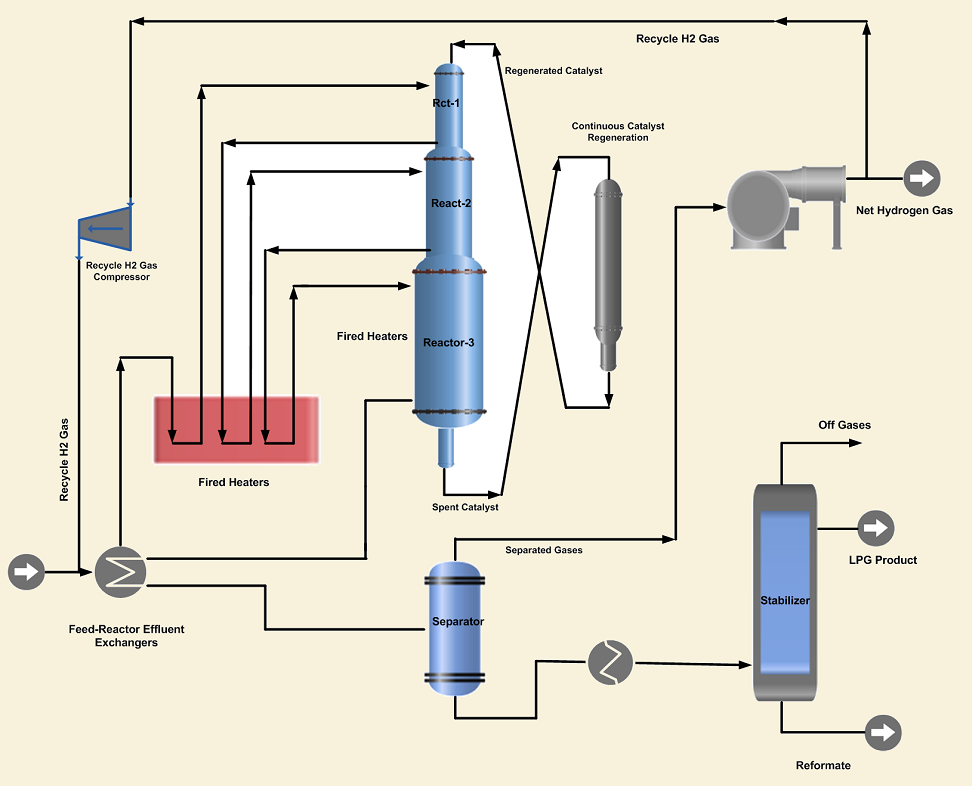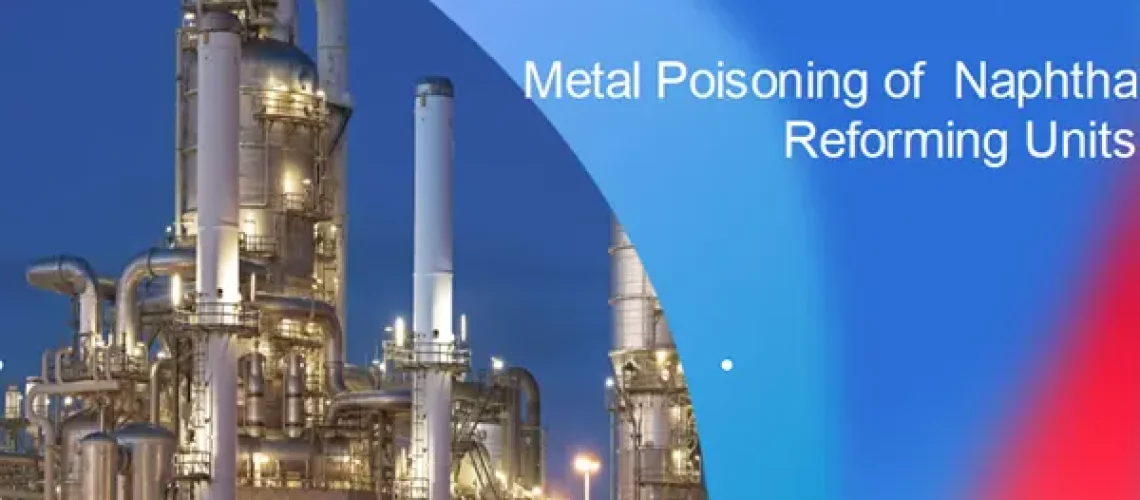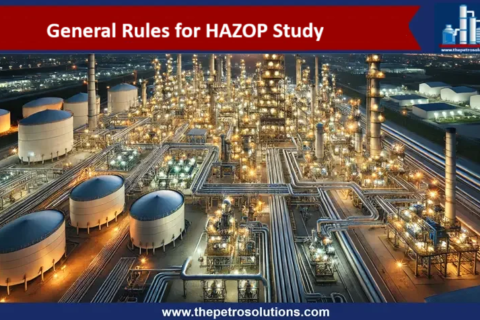Metals are permanent poisons for the naphtha reforming catalysts and irreversibly damage the catalyst. Most metals poison the metal functions of the catalyst. Metals impact tends to progress sequentially through the reactors in a fixed-bed reformer. In a CCR reformer unit with circulating catalyst, poisons can affect the whole catalyst inventory if the cause of pollution is not found.
Presence of metals will cause loss of catalyst activity and selectivity. Metal contaminant poisoning is usually more severe for platinum-containing reforming catalysts in catalytic reforming relative to those of base metal oxide catalysts used in the naphtha hydrotreater.
Effects of Metal Contamination
- A dramatic decrease in the Delta T (temperature drop) in the first reactor associated with an increased DT in the second reactor.
- A decrease in octane number of the reformate product.
- An increase in liquid product yield.
- A decrease in hydrogen production and purity.
- Increase in differential pressure across the reactor.
- Process fluid flow distribution problem in the reactor.
- Flow distribution problem and high differential pressure across the reactors due to collection of corrosion products (scale, rust, etc.) in the top layer of the first catalyst bed in a fixed reactor system, or the accumulation of scale or rust in the stagnant zone of the first reactor of CCR (Continuous Catalyst Regeneration) reforming unit.
- In addition to catalyst poisoning, platinum and palladium can form stable amalgams with mercury at temperatures below 570 °F and make it difficult to recover catalyst performance after catalyst regenerations.

Sources of Metal Impurities
- Due to age and the extent of corrosion of piping and equipment upstream of catalytic reforming units, corrosion products such as iron, chromium, molybdenum, and nickel are transported by the naphtha feed and deposited on catalytic reforming catalysts.
- Metal impurities can pass on to catalytic reformer catalysts if the naphtha hydrotreater catalysts become saturated with metal contaminants and metal contaminant breakthrough occurs.
- Mercury is found in crude oils in concentrations ranging from a few weight parts per billion (wppb) to weight parts per million. Under naphtha hydrotreater processing conditions, organically bound mercury is converted to elemental mercury, which is then entrained in naphtha and deposited on downstream equipment and catalysts.
- Demineralized water treatment compounds may contain metal impurities like copper & Zink and can be appeared in the treated naphtha.
- Overdosing of Anti foaming or anti corrosion additives in the system.
Control Measures
- Prevention of metal consists of adequate feed pretreatment in a Naptha Hydrotreating Unit and appropriate material selection to limit corrosion.
- It is very important to periodically check the metal content of the hydrotreater feed and product.
- Corrosion and metal dusting can be avoided utilizing upgraded materials consumption of piping and equipment.
- Avoid overdosing of corrosion inhibitors or anti foaming agents in the system.
- Control the Sulfur in the reforming feed to ~0.5 wppm to avoid Carburization or Metal catalyzed coking in the reforming heaters.
Top References
- Springer handbook of Petroleum Technology edited by Hsu & Robinson
- Catalytic Naphtha Reforming Process by Soni O. Oyekan
Certified Functional Safety Professional (FSP, TÜV SÜD), Certified HAZOP & PHA Leader, LOPA Practitioner, and Specialist in SIL Verification & Functional Safety Lifecycle, with 18 years of professional experience in Plant Operations and Process Safety across Petroleum Refining and Fertilizer Complexes.
- Nasir Hussainhttps://thepetrosolutions.com/author/admin/
- Nasir Hussainhttps://thepetrosolutions.com/author/admin/
- Nasir Hussainhttps://thepetrosolutions.com/author/admin/
- Nasir Hussainhttps://thepetrosolutions.com/author/admin/






